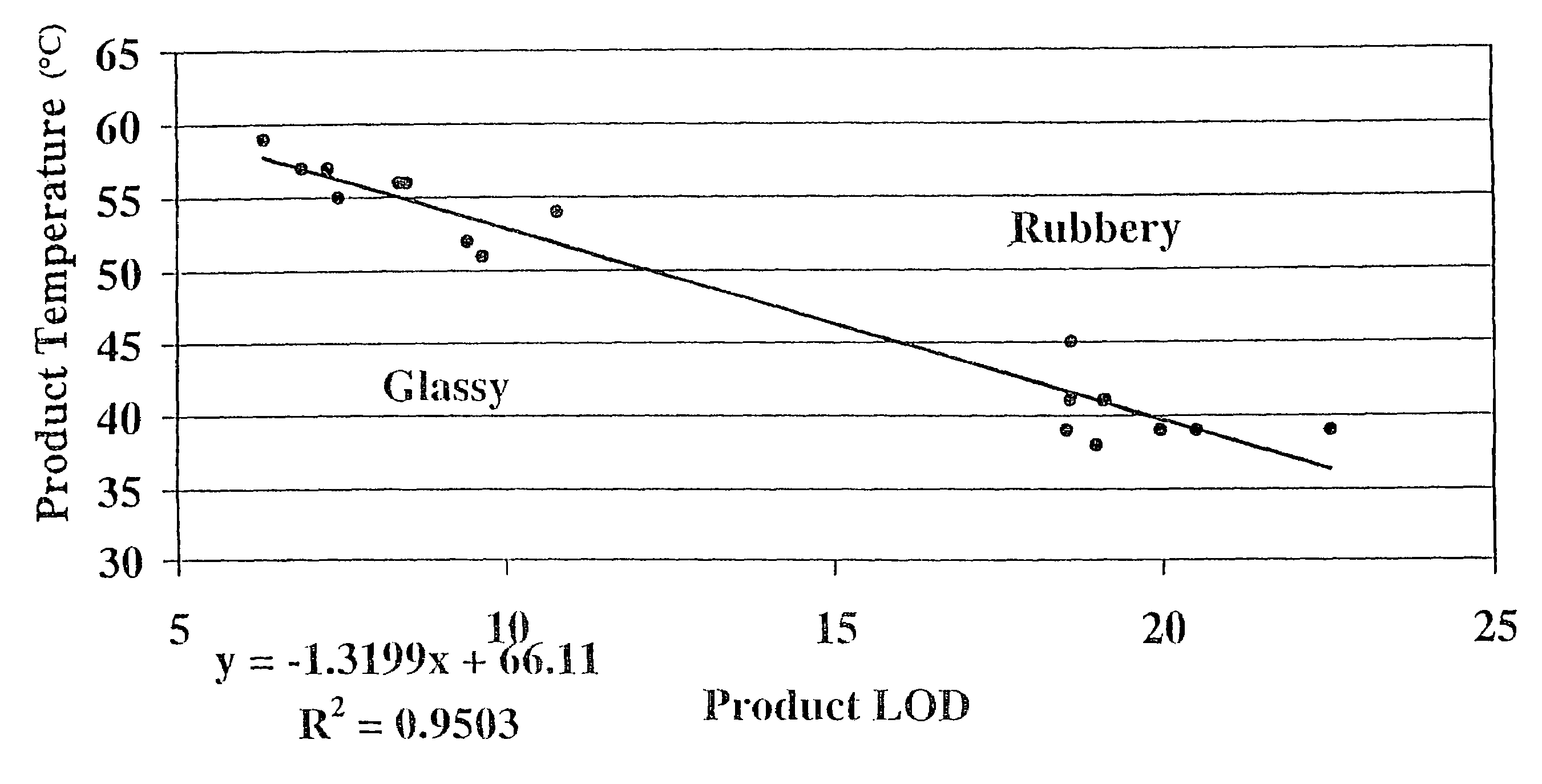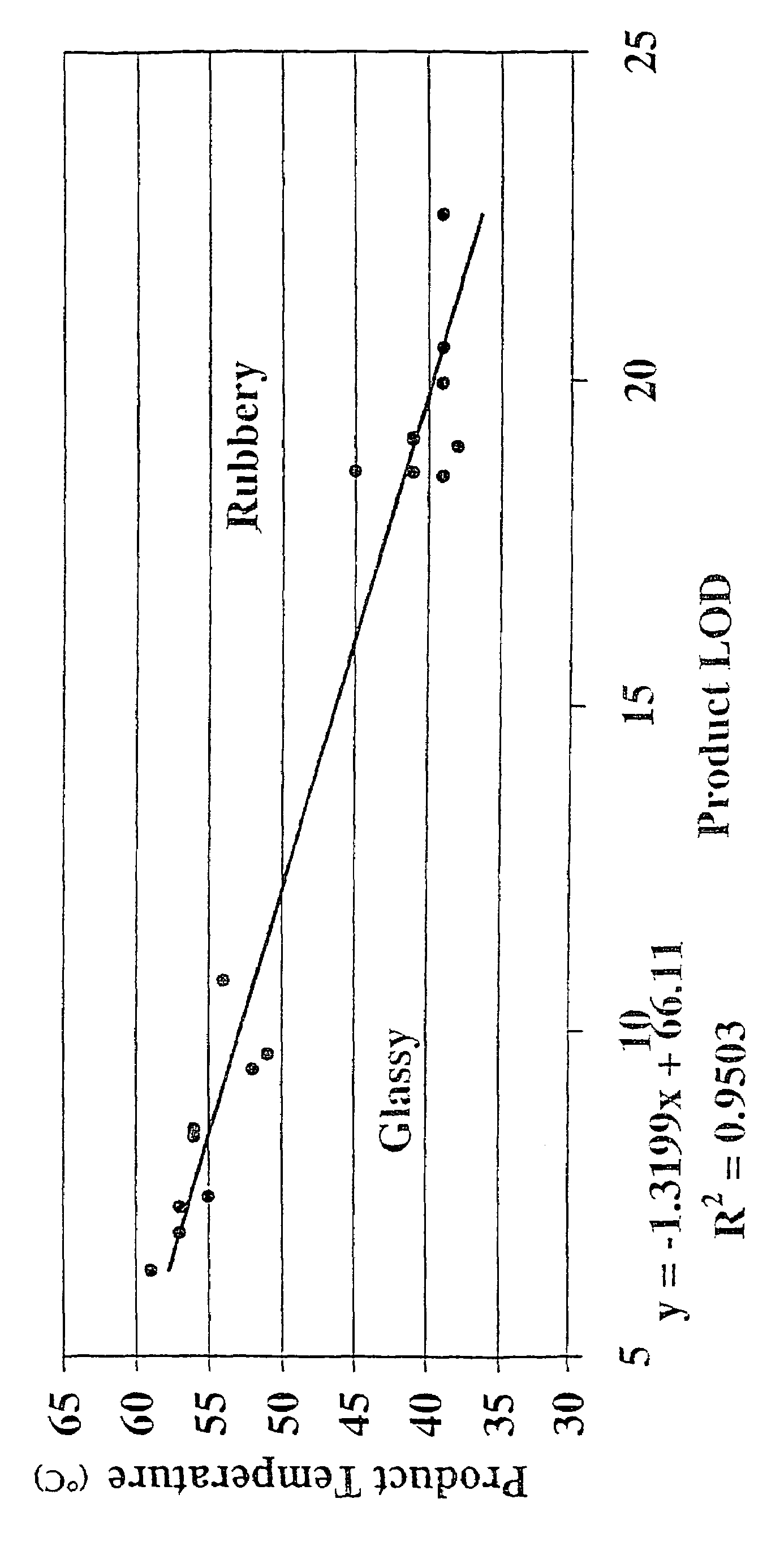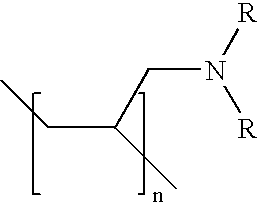Method of drying a material having a cohesive phase
a technology of cohesive phase and drying method, which is applied in the direction of drying machines, light and heating equipment, bandages, etc., can solve the problems of high temperature, damage to motors and drive systems, and difficult drying of polymer hydrogels, so as to avoid stress, strain, and damage to dryers. , the effect of high purity standards
- Summary
- Abstract
- Description
- Claims
- Application Information
AI Technical Summary
Benefits of technology
Problems solved by technology
Method used
Image
Examples
example
[0066]A wet epichlorohydrin crosslinked poly(allylamine hydrochloride) gel having mass of 27.2 kg and a solids content of 42.3% was fed into a Morton FM-130 Ploughshare Dryer. The moisture in the gel was an aqueous 70% (v / v) isopropanol solution. Drying was initiated by starting the main drive agitator and pulling a vacuum. The mixing speed was set at 80 RPM, and the heating jacket temperature was set at 80° C. The vacuum during drying was adjusted to 38–60 Torr by opening an air bleed valve into the vacuum pump.
[0067]Drying was allowed to continue under the above conditions until the onset of the cohesive phase. As the cohesive phase approached, the product temperature and vacuum level in the dryer steadily rose, and power draw fluctuations in the main drive steadily increased. Once the power draw fluctuations exceeded 14 amps on the main drive shaft, agitation was stopped, and the air bleed into the vacuum pump was shut off. The solids content of the product at this time was 90.5%...
PUM
| Property | Measurement | Unit |
|---|---|---|
| temperatures | aaaaa | aaaaa |
| temperatures | aaaaa | aaaaa |
| temperature | aaaaa | aaaaa |
Abstract
Description
Claims
Application Information
 Login to View More
Login to View More - R&D
- Intellectual Property
- Life Sciences
- Materials
- Tech Scout
- Unparalleled Data Quality
- Higher Quality Content
- 60% Fewer Hallucinations
Browse by: Latest US Patents, China's latest patents, Technical Efficacy Thesaurus, Application Domain, Technology Topic, Popular Technical Reports.
© 2025 PatSnap. All rights reserved.Legal|Privacy policy|Modern Slavery Act Transparency Statement|Sitemap|About US| Contact US: help@patsnap.com



